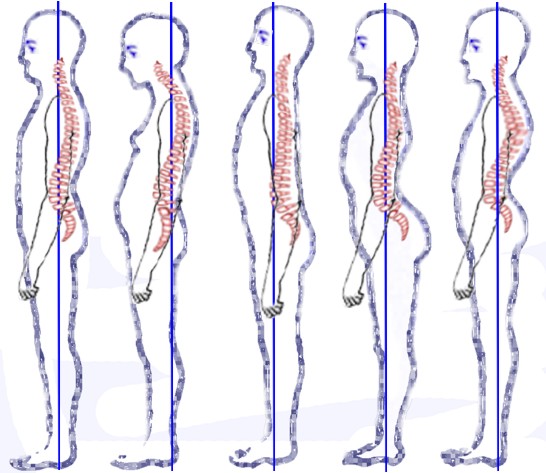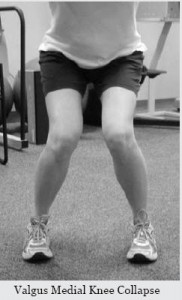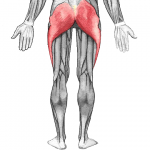
Got food? Nope.
Back in May I discussed Michael Mosley and his PBS special called Eat, Fast, and Live Longer. It motivated me to try out fasting. This is an update.
Fasting can take on various different forms. We often think of fasts in terms of total abstinence of food and drink but that’s not the only way to fast. Fasts may be undertaken for several days at a time, for 24
hrs, or during part of a day. Reasons to fast include medical instruction, weight loss and other health benefits, or religious devotion. I’ve employed two types of fasting for weight loss and the various other health benefits discussed in the previous post and below.
Types of fasts
– Intermittent Fasting: Intermittent fasting has days of fasting alternated with days of non-fasting. I’m not doing a full-on fast but rather I’m extending my nighttime fast and reducing my calories on these days. This pattern has been popularized by Michael Mosley’s FastDiet aka the 5:2 Diet. (As I’ve said, I find Mosley’s work compelling, but to be fair, the Wiki entry on the 5:2 diet mentions a lack of evidence for its efficacy. Make your own decision.) I typically take two rest days throughout the week on Wednesday and either Monday or Friday. These have been my fasting days.
The strict version of intermittent fasting has men consuming about 600 calories on the fast days, women about 500 calories. That ain’t much! I’m training for some athletic events so this isn’t necessarily the ideal time to fast as I need all sorts of nutrients, fuel, and protein in order to engage in and recover from workouts. My modification simply has me waiting to eat (more on that right below) and generally trying to consume fewer calories. I actually sort of look forward to trying this very low-calorie fast though. When I’m ready…
– Restricted Feeding Window: This process is the other component of my fasting project. Essentially, this has you restricting the time during which you eat. Typical suggestions are to eat only during an 8-hr. time period of the day and to fast the other 16 hrs. Eating programs such as the Perfect Health Diet and the Warrior Diet advocate the restricted eating window.
Research in mice has indicated favorable benefits of the restricted-feeding window. The Salk Institute for Biological Studies released a study last year in which a researcher said:
“It’s a dogma that a high-fat diet leads to obesity and that we should eat frequently when we are awake,” says Satchidananda Panda, an associate professor in the Regulatory Biology Laboratory and senior author of the paper. “Our findings, however, suggest that regular eating times and fasting for a significant number of hours a day might be beneficial to our health.”
Further, an article by Brownen in Ageing Research Reviews discusses evidence that both caloric restriction and intermittent fasting may have potential to combat age related illnesses such as Parkinson’s and Alzheimer’s. This type of information supports my efforts.
My early experience
I’ve combined intermittent fasting with the restricted feeding window for about a month now. I reduce my calories two days per week and I take in very few calories (about 230) in the morning. This comes from the coconut oil and grass-fed butter in my version of Bulletproof coffee. The idea is to prolong the overnight fast. Then sometime around noon or later I start eating. I typically do this on Wednesday and Friday which are my rest days. I’ve fasted on Mondays as well.
Besides the likely health benefits of fasting, I’d also like to lose some weight and get down to 195 lbs. I’m training for both the Triple Bypass bike ride and the Continental Divide Trail Run and both of those efforts would be a little easier if I were a little lighter. Therefore I’m tracking my caloric intake and expenditure with My Fitness Pal (Myfitnesspal.com). It’s a fantastic tool for anyone wanting to lose weight. (If you want to lose weight then you must track your food intake. If you’re not willing to track your food then you’re not serious about losing weight–and that’s OK. It’s just not going to happen unless you decide to do it.) I started using it in conjunction with fasting. It seems to be a very good combination. I’ve consistently weighed anywhere from 202 lbs. to about 207. Now, I’m consistently weighing anywhere from 195 lbs. to 198 lbs. My body composition has improved as well from about 18% to about 15%. These changes came about very quickly
My Fitness Pal has you filling out a profile that includes such data as age, sex and activity level. You then enter in how much weight you’d like to lose and how quickly you’d like to lose it–1 lb. per week for example. I started off using My Fitness Pal by only tracking my calories and not tracking my exercise expenditure. At times it was really tough to keep my calories within the prescribed range. Once I started entering my exercise data My Fitness Pal adjusted my caloric intake and allowed me to consume quite a bit more which was very helpful. It looks like my rapid weight loss was probably due to my adhering to the recommended caloric intake of a sedentary person. This while I was exercising quite vigorously and staying below the recommended calories on my fasting days. Quick weight loss indeed.
More information
If you’re interested in learning more about fasting, I’ve listed some resources below. I’m new to this and there’s a lot more you can learn.
Depriving yourself: The real benefits of fasting – This comes from the Chicago Tribune. The evidence of the benefits of fasting are discussed:
“When it comes to treating cancer, Valter (cq) Longo, director of the Longevity Institute at the University of Southern California, thinks that short-term complete fasts maximize the benefits. He’s found that a 48-hour total fast slowed the growth of five of eight types of cancer in mice, the effect tending to be more pronounced the more fasts the animals undertook (Science Translational Medicine).
 Fasting is harder on cancer cells than on normal cells, he says. That’s because the mutations that cause cancer lead to rapid growth under the physiological conditions in which they arose, but they can be at a disadvantage when conditions changes. This could also explain why fasting combined with conventional cancer treatment provides a double whammy.
Fasting is harder on cancer cells than on normal cells, he says. That’s because the mutations that cause cancer lead to rapid growth under the physiological conditions in which they arose, but they can be at a disadvantage when conditions changes. This could also explain why fasting combined with conventional cancer treatment provides a double whammy.Clinical trials assessing the impact of fasting in people with cancer are ongoing. Early results are promising, says Longo, and patients in the advanced stages of cancer, who cannot wait for the results, might find it worth discussing fasting with their oncologist.
Could fasting prevent cancers developing in the first place? Evidence is scant but there are ‘very good reasons’ why it should, says Longo. He points out that high levels of IGF-1 and glucose in the blood, and being overweight are all risk factors for cancer, and they can all be improved by fasting. Another risk factor is insulin, says Michelle Harvie at the University of Manchester, UK.
Studying women whose family history puts them at high risk of developing breast cancer, she put half of them on a diet that involved cutting calories by about 25 percent, and half on a 5:2 fast. After six months, both groups showed a reduction in blood insulin levels, but this was greater in the fasting group. Harvie’s team is now analyzing breast biopsies to see whether this translates to fewer of the genetic changes associated with increased cancer risk.
High insulin is also associated with type 2 diabetes, so perhaps it is no surprise that fasting shows promise here, too.”
Ready, Set, Fast: How Strategic Meal-Skipping Can Help You Lose Fat, Gain Muscle and Get Healthier – Dr. John Berardi of Precision Nutrition wrote this for The Art of Manliness. It’s his account of his own fasting experiment. He gives a good rundown of fasting basics, different types of fasts, links to fasting research, and his take on how to get started.
The UK’s Hot New 5:2 Diet Craze Hits The U.S. – Weight Loss Miracle? – We haven’t discussed the drawbacks of fasting. This article from Forbes discusses several aspects of fasting including intermittent fasting which the 5:2 Diet is based on. Some of the downsides of fasting are mentioned here too.
“The main drawback of intermittent fasting that has drawn many vocal critics is that it’s really, really hard to do. There’s no question, you’re going to be pretty hungry – and pretty grumpy – on your fasting days. And when dieting is miserable, people tend not to stick to it. And when they don’t stick to it, they get discouraged, often eating even more once they give up. Other than that, experts cite side effects including dehydration, irritability, anxiety, sleep problems, and bad breath.
Like many fad diets, intermittent fasting is likely to work really well for some people, discourage many more. But you won’t know which group you fall into until you try. So get ready to start coordinating your fast days with family and friends; the 5:2 FastDiet is going to be around for awhile.”
The writer makes a good point. Fasting isn’t all that easy or fun. But neither is cancer, diabetes or being overweight. What’s your health worth to you?





